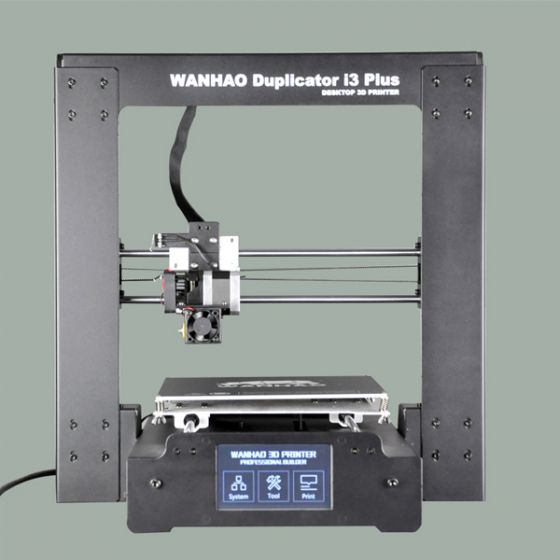Ian Marks is an Optician with more than 30 years working experience in the Optical Industry. In the last 4 years, Marks has come up with a new concept of making eyewear via 3D printing which he believes will change the way Optics are made in South Africa and Zimbabwe. The concept involves designing and 3D printing of optical frames for medical patients and clients directly. This is something still very new in Southern Africa. For this purpose, Marks set up a startup company called 3D Optics to realise the goal and now he is working on further establishing his company and going to market.
Marks takes us through his concept, current work done and some challenges faced as a startup.
Can you share your startup concept with us?
My vision is to set up an Optical practise that just does 3D printing of spectacles frames in the practise itself. The aim of this is to provide patients with the freedom of choice to design their own individual look for spectacles, a look that is unique to them. Patients will sit with a consultant in the practice and design their own special spectacles the way they want them, creating a form of exclusivity that no one else will have. I have spent the last 3 years on projections for this and I believe now is the time to put it into fruition. Zimbabwe will have the first Optician to do this in the region. As an add on we could also design and print Prosthetics for children and adults that have a need for this thereby down the line possibly doing this for hospitals in the area which would be an extra revenue stream. I have used my own Wanhao I3 duplicator plus printer so far and it is very cost effective.
Who is your target market?
I am looking at targeting every class especially bearing in mind the current economic situation in Southern Africa and in particular in Zimbabwe. The service should be affordable to all. Based on my projections, optical frames use about 50g of filament and this is US$2-3 which I think would make it within reach. You want to have clients with flexibility in the choice of their optical solutions and having an Optician provide such flexibility through 3D printing does just that.
Will you do only frames?
Frames are a starting point and definitely, there is room for extending service to provide a complete spectacle. There is a Netherlands based company already 3D printing lenses and it’s called Luxexcel. I am following the developments closely as part of my goal to produce complete spectacles. The idea is to be a one stop shop to the client from design to product delivery.
What software do you use?
Blender and sketch up are good for the designs. Open source works perfectly and does the job but the important thing is the skill to be able to produce the design and prepare for printing.
How much would this cost?
I am looking at around USD$60,000-70,000 and this for acquiring 3D printers, scanners, optics equipment and setting up. With such kind of funding, a fully-fledged practise can be set up and ready to serve. A decent printer for such design can be as low as US$1800 depending on brand and quality.
Any challenges in finding funding?
Yes and this challenge for start-ups in Africa. While I am starting small funding for the larger scale is still needed. Looking at the potential the 3D printing in Optics has in the immediate future, the time is right for investment. I see exponential growth in the line of business for the next two to three years.
Lastly, how do you see 3D printing in Optics from this point on?
3D printing is going to be a major game changer in Optics practise. As a matter of fact it’s already a game changer especially in Europe and United States. Here it has been slow or rather still in its infancy but now is the time to up the game considering the technology is evolving as well and there is need to keep abreast and develop with the technology. From my market research, the sector will grow significantly with integration of 3D printing technology.
Subscribe to Our Email Newsletter
Stay up-to-date on all the latest news from the 3D printing industry and receive information and offers from third party vendors.
You May Also Like
Precision at the Microscale: UK Researchers Advance Medical Devices with BMF’s 3D Printing Tech
University of Nottingham researchers are using Boston Micro Fabrication‘s (BMF) 3D printing technology to develop medical devices that improve compatibility with human tissue. Funded by a UK grant, this project...
GaeaStar and Verve Coffee Roasters Start Pilot Production of Sustainable 3D Printed Coffee Cups
Following a 2022 debut in Germany, GaeaStar, a startup based in San Francisco and Berlin, has begun US pilot production of its sustainable, disposable clay cups and bowls made with...
Meltio and Accufacture Unveil Robotic Metal 3D Printer Made in the US
Meltio has partnered with Michigan-based robotics firm Accufacture to introduce Alchemist 1, a robotic cell designed for wire-laser metal 3D printing made in the US. This new system represents a...
WASP Highlights Advances in Healthcare 3D Printing at Italy’s Exposanità 2024
WASP takes center stage at Italy’s leading healthcare expo, Exposanità 2024, demonstrating the transformative impact of its advanced 3D printing technologies on the medical sector. Known for its line of...



































